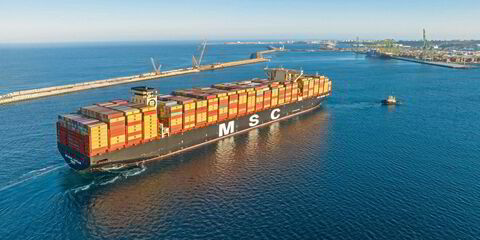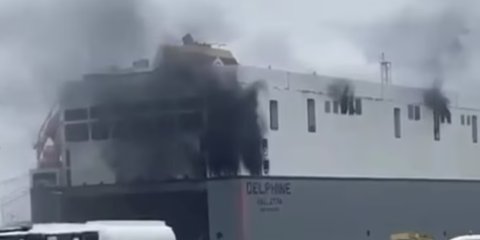Russian President Vladimir Putin is opening the door to foreign investment in the Northern Sea Route through the Arctic.
Speaking at a meeting with Chinese counterpart Xi Jinping in Beijing, Putin praised Xi’s Belt & Road Initiative.
He told the summit that the global infrastructure scheme fitted well with the NSR, which could further trade ties between east and west.
Putin said Russia is developing its own transport infrastructure across the country.
“As for the NSR, Russia does not just offer its partners to actively use its transit potential, I will say more: we invite interested states to participate directly in its development, and we are ready to provide reliable icebreaker navigation, communication and supply,” Putin said, according to Reuters.
“Starting next year, navigation for ice-class cargo ships along the entire length of the NSR will become year-round.”
This was only Putin’s second known trip outside Russia or Russian-held territories since the invasion of Ukraine in February 2022. He called Xi a “dear friend”.
Earlier this month, US shipbroker Poten & Partners said Russia appears “willing to compromise safety” by using non-ice class tankers to increase oil flows through the Arctic.
The government has accelerated shipments to China via the NSR in the face of sanctions and the resulting shift in export destinations.
The NSR is about 3,500 miles (5,600 km) long, defined by Russia as running from the entrance to the Novaya Zemlya straits in the west, along the Russian Arctic coast above Siberia to Cape Zhelaniya on the Bering Strait in the east.
Saving time
A journey from the Barents Sea to the port of Rizhao in China via the NSR takes 35 days, 10 days less than the alternative southern route from the Baltic through the Suez Canal.
Poten said the potential for time and fuel savings is “significant”. However, there are “limitations and risks”.
“The weather situation can change quickly, and this could cause problems. For example, in November 2021, more than 20 ships got stuck in a remote area following a quick and early freeze of the waters. Such delays wipe out any cost and time savings,” the broker said.
“In addition to an icebreaker escort, the vessels that make the journey are usually ice-class tankers, strengthened to withstand the icy conditions during the NSR passage.
“If something goes wrong during the passage, it will be very difficult to respond to an oil spill.”




